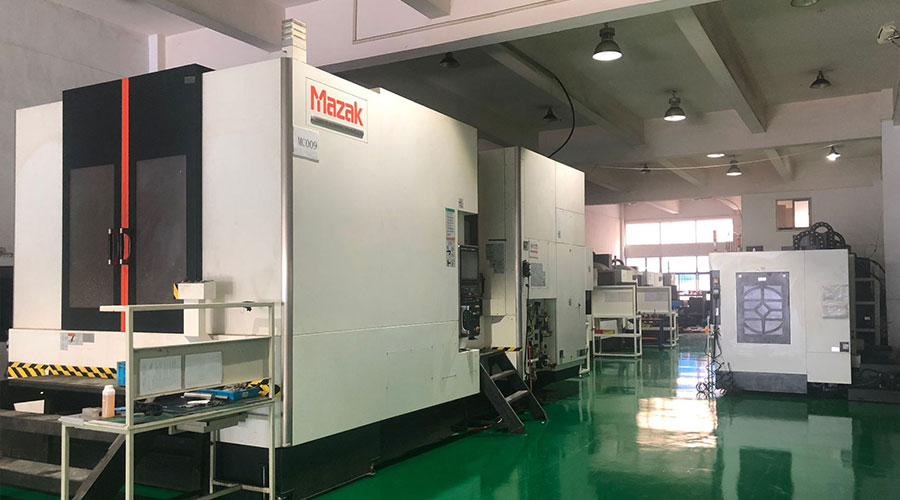Quantum dots are man-made nano-semiconductor materials composed of only a few thousand atoms. Due to the small number of atoms, the properties of quantum dots are between a single atom or molecule and a bulk material with a large number of atoms.
By changing the size and shape of nanoparticles, it is possible to fine-tune their electronic and optical properties-how electrons combine and move in the material, and how light is absorbed and emitted by it.
As the control of the size and shape of nanoparticles becomes more and more refined, the number of commercial applications is also growing. These technologies include lasers, LEDs, and TVs using quantum dot technology.

Nanomaterials of perovskite are dispersed in hexane and irradiated with laser. The light emission of these materials is very strong due to their resistance to surface defects
However, there is a problem that may affect the efficiency of devices or appliances that use such nanomaterials as active media. When light is absorbed by a material, the electrons are raised to a higher energy level, and when they return to their basic state, each electron can release a photon to the environment. In traditional quantum dots, the process of returning electrons to their basic state will be disturbed by various quantum phenomena, thereby delaying the emission of light to the outside world.
Containing electrons in this way, the so-called “dark state”, hinders the emission of light. In contrast, electrons can quickly return to the basic state, thereby emitting light more efficiently and directly (“bright state” ).
In a new type of nanomaterial made of perovskite, this delay can be shortened, which has aroused great interest among materials science researchers.
A study conducted by researchers at the University of Campinas in the Institute of Chemistry and Physics (by) in Sao Paulo, Brazil, with scientists from the University of Michigan in the United States, has made great strides in this direction, providing novel insights into calcium The basic physics of titanium ore quantum dots. An article about this research was published in the journal “Science Advances”.
We use coherence spectroscopy, which allows us to analyze the electronic behavior of each nanomaterial separately in a collection of tens of billions of nanometer materials. This research is groundbreaking because it combines a relatively new nanomaterial-perovskite-with a completely new detection technology. Lázaro Padilha Junior, the lead researcher of the project in Brazil, told Agência FAPESP.
FAPESP supported this research by granting Padilha a grant for young investigators and a regular research grant.
Padilha said that we were able to verify the energy arrangement between the bright state (related to triplets) and the dark state (related to single wires), showing how this arrangement depends on the size of the nanomaterial. We have also discovered the interaction between these states, which provides opportunities for the use of these systems in other technical fields, such as quantum information.
Due to the crystal structure of the perovskite, the brightness energy level is divided into three energy levels, forming three energy levels. This provides various ways for excitation and return of electrons to the ground state. The most striking result of the study, by analyzing the characteristics of the three bright life states and the signal emitted by the sample, we obtained evidence that the dark state exists, but is located in three states with energy levels higher than two bright. This means that when light hits the sample, the excited electrons will only be captured when they are at the highest bright energy level, and then transferred to the dark state. If they occupy a lower brightness, they can return to their basic state more effectively.
To study the interaction of electrons and light in these materials, the group uses multi-dimensional coherence spectroscopy (mdc), in a burst of ultrashort laser pulses (about 80 femtoseconds per period, or 80/1000000000000000 seconds) beam cooling to minus 269 in perovskite samples Degrees Celsius.
The pulse irradiates the sample at strictly controlled intervals. By modifying the interval and the function of the sample interval emitted by the probe light, we can analyze the electron-light interaction and its dynamics with high time accuracy, map the typical interaction era, their energy level, and the interaction with other particles.
The MDCS technology can be used to analyze billions of nanoparticles at the same time and distinguish between different families of nanoparticles in the sample.
The experimental system was developed by a team led by Steven Cundiff, a principal researcher at the University of Michigan. Some of these measurements were made by Diogo Almeida, a former member of the Candiff team, who now works in Unikamp’s Ultrafast Spectroscopy Laboratory and obtained them under the guidance of Padilla. FAPESP postdoctoral scholarship.
The quantum dots were synthesized by Luiz Gustavo Bonato, a doctoral student at the UNICAMP Institute of Chemistry. Ana Flávia Nogueira, the co-principal researcher of the Brazilian study, said that Bonato’s efforts in preparing quantum dots and his solutions are very important. This can be seen from the quality and size of quantum dots and the properties of nanomaterials. Be proven. Nogueira is a professor at the Institute of Chemistry (IQ-UNICAMP) and the principal researcher of the first research department of the New Energy Innovation Center (CINE), which is the Engineering Research Center (ERC) established by FAPESP and Shell.
The results obtained are very important because knowledge of the optical properties of materials and their electronic behavior provides opportunities for the development of new technologies in semiconductor optics and electronics. The addition of perovskite is very likely to become the most significant feature of the next generation of TV sets.
Link to this article: The use of perovskite nanomaterials is expected to revolutionize next-generation electronic devices
Reprint Statement: If there are no special instructions, all articles on this site are original. Please indicate the source for reprinting:https://www.cncmachiningptj.com/,thanks!
 PTJ® provides a full range of Custom Precision cnc machining china services.ISO 9001:2015 &AS-9100 certified. Large scale machining Manufacturer of medical bags, providing 3D design, prototype and global delivery services. Also offering hard cases, semi-hard EVA, soft-sewn cases, pouches and more for OEMs. All cases are made custom according to specifications with infinite combinations of materials, molds, pockets, loops, zippers, handles, logos and accessories. Shockproof, water-resistant and eco-friendly options. Medical parts, emergency response, Electronic parts, corporate, education, military, security, sports, outdoors and construction industries. Services include case concept consultation, 3D design, prototyping,rototyping,CNC Drilling Services and manufacturing.Tell us a little about your project’s budget and expected delivery time. We will strategize with you to provide the most cost-effective services to help you reach your target,You are welcome to contact us directly ( [email protected] ) .
PTJ® provides a full range of Custom Precision cnc machining china services.ISO 9001:2015 &AS-9100 certified. Large scale machining Manufacturer of medical bags, providing 3D design, prototype and global delivery services. Also offering hard cases, semi-hard EVA, soft-sewn cases, pouches and more for OEMs. All cases are made custom according to specifications with infinite combinations of materials, molds, pockets, loops, zippers, handles, logos and accessories. Shockproof, water-resistant and eco-friendly options. Medical parts, emergency response, Electronic parts, corporate, education, military, security, sports, outdoors and construction industries. Services include case concept consultation, 3D design, prototyping,rototyping,CNC Drilling Services and manufacturing.Tell us a little about your project’s budget and expected delivery time. We will strategize with you to provide the most cost-effective services to help you reach your target,You are welcome to contact us directly ( [email protected] ) .
Link to this article:The use of perovskite nanomaterials is expected to revolutionize next-generation electronic devices
Reprint Statement: If there are no special instructions, all articles on this site are original. Please indicate the source for reprinting.:Cut Wiki,Thanks!^^
